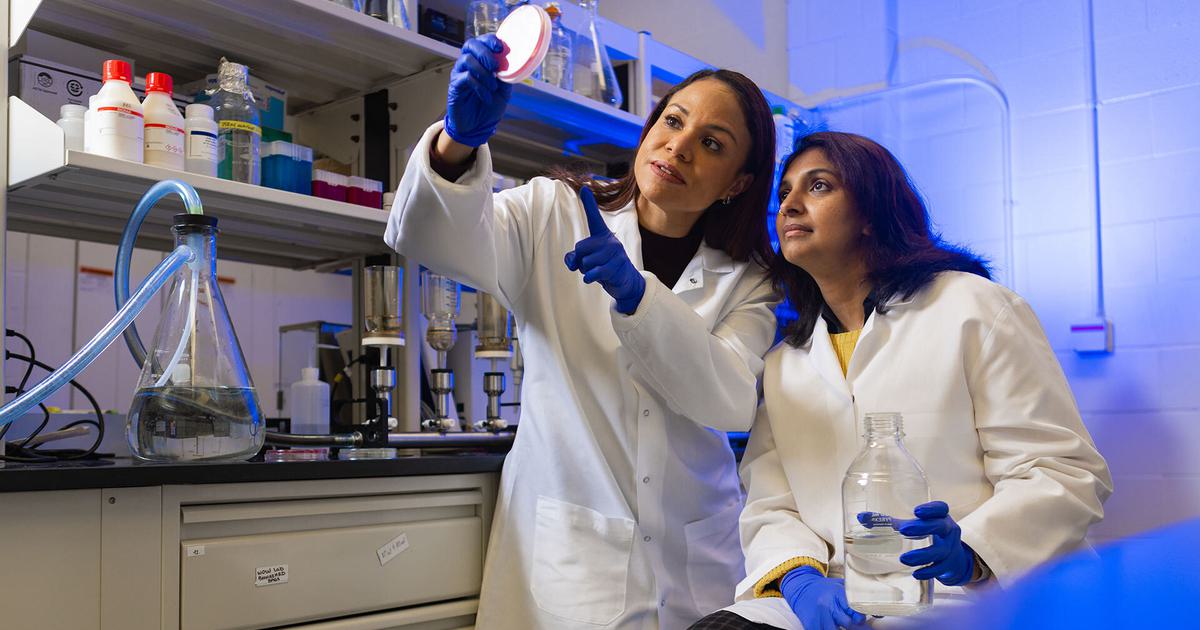To Gauge Maryland’s Drinking Water Quality, Researchers Tap Into the…
Maryland Today | To Gauge Maryland's Drinking Water Quality,… Maryland Today


Safe Drinking Water in Maryland: A Statewide Analysis

Introduction
Ensuring safe drinking water for all Marylanders is a crucial step towards achieving the Sustainable Development Goals (SDGs). However, the quality of drinking water varies across different areas of Maryland, with some neighborhoods in Baltimore experiencing issues such as brown water and contamination. To address this problem, the University of Maryland School of Public Health has initiated the Maryland Safe Drinking WATER (Water Analysis and Testing for Education and Research) Study. This statewide analysis aims to collect and test water samples from public drinking water systems and private wells, providing valuable insights into the level of contaminants in Maryland’s drinking water.
Study Objectives
- Collect and test water samples from public drinking water systems and private wells in Maryland
- Assess the level of contaminants in Maryland’s drinking water
- Focus on underserved areas of the state to safeguard the health and well-being of communities
Research Team
- Assistant Research Professor Leena Malayil
- Assistant Research Professor Rianna Murray
- Professor Amy Sapkota
- Professor Allen Davis
- Associate Professor Paul Turner
- Postdoctoral Fellow Suhana Chattopadhyay
- Program Manager Georgia Parolski
Current Challenges
Baltimore, once known for its advanced water treatment system, now faces significant challenges due to its aging infrastructure. While the city’s drinking water meets federal safety standards at treatment plants, it can become contaminated with lead, E. coli, and other pollutants as it flows through deteriorating pipes. Additionally, water quality issues extend beyond Baltimore, with the presence of per- and polyfluoroalkyl substances (PFAS) detected in 65 of Maryland’s community water systems. The impact of contaminants on private wells, serving over 1 million residents, remains largely unknown.
Study Methodology
The study has enrolled nearly 800 residents who are collecting water samples using provided test kits. These samples will be tested for microbiological contaminants, PFAS, and heavy metals like iron and copper. The results will serve as a baseline for further analysis of Maryland’s private and public drinking water sources. Phase 2 of the study will include inorganic pollutant analysis and metagenomic sequencing to assess the presence of bacterial communities, which have not been extensively studied in municipal drinking water.
Policy Implications
The findings of this study, particularly regarding PFAS contamination, are of interest to state and federal agencies like the Environmental Protection Agency (EPA). Establishing safe limits for PFAS and other contaminants can inform public policy and improve water system safeguards. The study team hopes that their research will contribute to the development of more widespread standards on drinking water and the adoption of best practices.
Community Engagement and Education
In collaboration with the University of Maryland Extension, the research team aims to conduct educational workshops and outreach programs across the state. These initiatives will focus on well management protocols, guidelines for installing filters, and citizen science engagement. By promoting awareness and knowledge about water quality, the team hopes to empower communities to take action and ensure the safety of their drinking water.
Conclusion
The Maryland Safe Drinking WATER Study provides a holistic approach to understanding the quality of drinking water in Maryland. While water treatment plants adhere to strict EPA standards, they may not have the capacity for in-depth laboratory analysis. This study aims to fill that gap by examining a variety of contaminants and considering the complete journey of water from its source to the tap. By addressing the challenges and improving the understanding of Maryland’s drinking water, this research contributes to the achievement of the SDGs and the well-being of Maryland communities.
SDGs, Targets, and Indicators
-
SDG 6: Clean Water and Sanitation
- Target 6.1: By 2030, achieve universal and equitable access to safe and affordable drinking water for all.
- Target 6.3: By 2030, improve water quality by reducing pollution, eliminating dumping and minimizing release of hazardous chemicals and materials, halving the proportion of untreated wastewater, and substantially increasing recycling and safe reuse globally.
- Indicator 6.1.1: Proportion of population using safely managed drinking water services.
- Indicator 6.3.2: Proportion of bodies of water with good ambient water quality.
-
SDG 11: Sustainable Cities and Communities
- Target 11.3: By 2030, enhance inclusive and sustainable urbanization and capacity for participatory, integrated, and sustainable human settlement planning and management in all countries.
- Indicator 11.3.1: Ratio of land consumption rate to population growth rate.
Analysis
The article addresses the issues related to the quality of drinking water in Maryland and its impact on public health. The following SDGs, targets, and indicators can be identified based on the article’s content:
1. SDG 6: Clean Water and Sanitation
The article highlights the need to ensure safe drinking water for all Marylanders. It mentions that the Maryland Safe Drinking WATER Study aims to collect and test water samples from public drinking water systems and private wells to gain insight into the level of contaminants in Maryland’s drinking water. This aligns with SDG 6, which aims to achieve universal access to safe and affordable drinking water.
Targets:
- Target 6.1: By 2030, achieve universal and equitable access to safe and affordable drinking water for all.
- Target 6.3: By 2030, improve water quality by reducing pollution, eliminating dumping and minimizing release of hazardous chemicals and materials, halving the proportion of untreated wastewater, and substantially increasing recycling and safe reuse globally.
Indicators:
- Indicator 6.1.1: Proportion of population using safely managed drinking water services.
- Indicator 6.3.2: Proportion of bodies of water with good ambient water quality.
2. SDG 11: Sustainable Cities and Communities
The article mentions the challenges faced by Baltimore due to its crumbling infrastructure, which affects the quality of drinking water. This relates to SDG 11, which focuses on sustainable cities and communities. The article also highlights the need for inclusive and sustainable urbanization and management of human settlements.
Targets:
- Target 11.3: By 2030, enhance inclusive and sustainable urbanization and capacity for participatory, integrated, and sustainable human settlement planning and management in all countries.
Indicators:
- Indicator 11.3.1: Ratio of land consumption rate to population growth rate.
Table: SDGs, Targets, and Indicators
| SDGs | Targets | Indicators |
|---|---|---|
| SDG 6: Clean Water and Sanitation |
|
|
| SDG 11: Sustainable Cities and Communities |
|
|
Behold! This splendid article springs forth from the wellspring of knowledge, shaped by a wondrous proprietary AI technology that delved into a vast ocean of data, illuminating the path towards the Sustainable Development Goals. Remember that all rights are reserved by SDG Investors LLC, empowering us to champion progress together.
Source: today.umd.edu

Join us, as fellow seekers of change, on a transformative journey at https://sdgtalks.ai/welcome, where you can become a member and actively contribute to shaping a brighter future.







